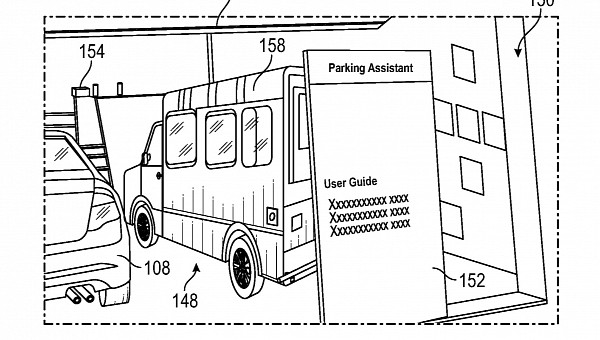Automatic parking is certainly among the biggest inventions lately, and Ford believes the first major overhaul is already feasible.
Augmented reality is gradually making its way into the automotive space. Navigation solutions, for example, are getting AR-powered features to provide drivers with additional capabilities, including automatic object recognition on top of real-life imagery.
In Ford’s vision, augmented reality devices can be used to indicate the location where a car must park. With integrated automatic systems, the vehicle would then autonomously park in the required space.
The firm explains an onboard system can automatically determine the current vehicle position and its dimensions. Then, the same system can assess the dimensions of a parking space and figure out where the car would fit.
The driver can then use an augmented reality interface to check out the available parking spaces. By indicating the parking space they want to use, drivers would instruct the automatic systems to initiate the parking procedure. The vehicle would then take care of everything automatically based on the analysis it already conducted.
Ford says its technology would generate images and 3D scans of a parking space. Thanks to a three-dimensional vehicle model that includes information like precise dimensions, the data can be compared to determine if a car fits in the available parking spaces.
Using the AR-powered interface, the system would be able to place a 3D vehicle model in the parking space. This way, it can accurately calculate the available space, allowing the automatic system to control the car with respect to adjacent objects.
In some cases, the system can also suggest certain parking places based on its analysis. In addition, Ford’s technology would also take into account existing attachments, such as a cargo box or bicycles. As such, the new dimensions would automatically be processed when the 3D data is compared against the available parking space.
The carmaker explains that the AR display, most likely installed on the dashboard, could also allow the driver to control the vehicle when required. Users would be able to move the vehicle in all directions right from the AR display in order to park it in a more convenient position. This could come in handy when drivers need more space on one side of the vehicle, such as when traveling with a baby.
At this point, Ford’s idea sounds crazy to some people, especially as it involves AR technology. However, it’s probably just a matter of time before such systems make their way to the automotive world, especially given automatic parking tech has been offered for several years already.
There’s obviously no timing information for mass production, as the idea is still in the patent stage for the time being.
In Ford’s vision, augmented reality devices can be used to indicate the location where a car must park. With integrated automatic systems, the vehicle would then autonomously park in the required space.
The firm explains an onboard system can automatically determine the current vehicle position and its dimensions. Then, the same system can assess the dimensions of a parking space and figure out where the car would fit.
The driver can then use an augmented reality interface to check out the available parking spaces. By indicating the parking space they want to use, drivers would instruct the automatic systems to initiate the parking procedure. The vehicle would then take care of everything automatically based on the analysis it already conducted.
Ford says its technology would generate images and 3D scans of a parking space. Thanks to a three-dimensional vehicle model that includes information like precise dimensions, the data can be compared to determine if a car fits in the available parking spaces.
Using the AR-powered interface, the system would be able to place a 3D vehicle model in the parking space. This way, it can accurately calculate the available space, allowing the automatic system to control the car with respect to adjacent objects.
In some cases, the system can also suggest certain parking places based on its analysis. In addition, Ford’s technology would also take into account existing attachments, such as a cargo box or bicycles. As such, the new dimensions would automatically be processed when the 3D data is compared against the available parking space.
The carmaker explains that the AR display, most likely installed on the dashboard, could also allow the driver to control the vehicle when required. Users would be able to move the vehicle in all directions right from the AR display in order to park it in a more convenient position. This could come in handy when drivers need more space on one side of the vehicle, such as when traveling with a baby.
At this point, Ford’s idea sounds crazy to some people, especially as it involves AR technology. However, it’s probably just a matter of time before such systems make their way to the automotive world, especially given automatic parking tech has been offered for several years already.
There’s obviously no timing information for mass production, as the idea is still in the patent stage for the time being.













